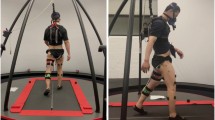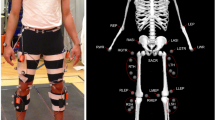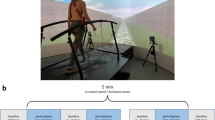Abstract
IN walking over a level surface, were there no muscular loss or imperfect elasticity in the ground, the only work to be done would be that required to start the body and limbs at the walking speed, which work might be recovered when stopping. Thus any energy expended in walking on the level is due either to work taken up by the ground, or lost by muscular inefficiency. (Air resistance may be neglected at walking speeds.)
This is a preview of subscription content, access via your institution
Access options
Subscribe to this journal
Receive 51 print issues and online access
$199.00 per year
only $3.90 per issue
Buy this article
- Purchase on SpringerLink
- Instant access to full article PDF
Prices may be subject to local taxes which are calculated during checkout
Similar content being viewed by others
Rights and permissions
About this article
Cite this article
MALLOCK, A. Muscular Inefficiency and Possible Speeds of Walking. Nature 99, 83–84 (1917). https://doi.org/10.1038/099083c0
Issue date:
DOI: https://doi.org/10.1038/099083c0



